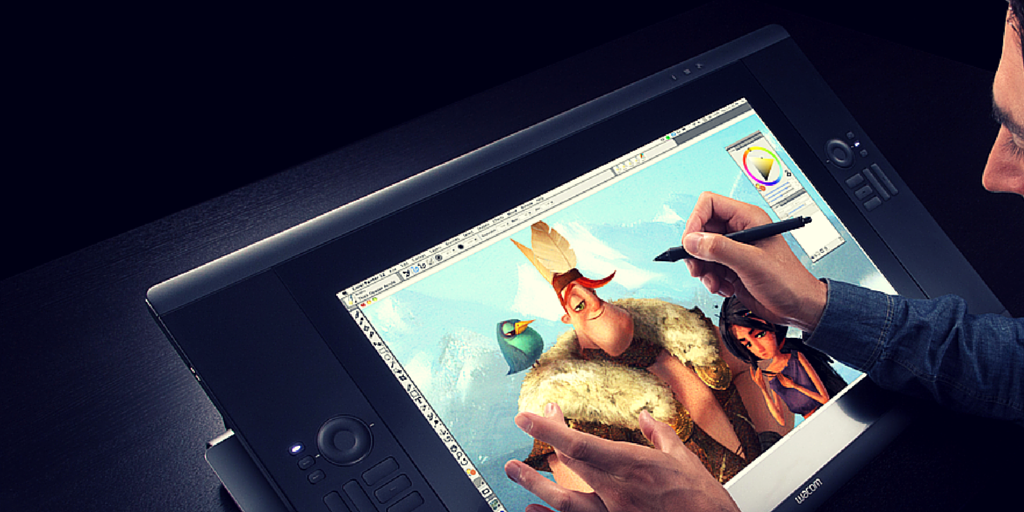The principles that animation courses teach haven’t changed much over the years, but the tools of the trade are always evolving. Having the right tech to hand can allow you to achieve amazing things, and as most studios are migrating to predominately digital workflows it helps to be up with the latest methods. We’ve already touched on animation software packages in previous posts, but this week we’re going to look in more depth at the best graphics tablets for the job. There are plenty of great options out there, and chances are that when you find the right one you’ll never look back.
What is a graphics tablet?
For those who’ve never used one, a graphics tablet is essentially a flat input panel that connects to a PC or Mac. With a special stylus, you draw onto the surface of the tablet to guide a cursor across the computer display. The main appeal of these devices is that they have multiple levels of pressure sensitivity, meaning you can vary the stroke of your lines depending on how hard you push down on the panel. This allows for a much more naturalistic effect with your digital drawings than you would be able to achieve with a mouse. Graphics tablets also have the added benefit of keeping your hands out of the way while you’re drawing, which helps if you’re navigating a programme with a crowded UI such as Toon Boom Harmony or Photoshop.
Recommended models
In terms of what model to go for, you really can’t go too far wrong with the Wacom Intuos series. Headline features of this range include:
- 2,048 pen pressure levels, offering a tactile and responsive interface
- Tilt and multi-touch capabilities
- Express keys for faster navigation of programmes
The Intuos range also comes in a huge range of sizes, meaning you can always find a model to suit your workspace. In addition, there are a number of rivals that provide a similar experience at a lower price, including Yiynova, Huion and Monoprice, so keep an eye out for any good deals that might crop up.
The drawbacks
For all their benefits, however, a lot of artists with a background in traditional media find using a graphics tablet a difficult proposition. Starting out there is a bit of a cognitive disconnect between moving your hand and following the on-screen marker, and some people just can’t get past this initial hump. The best way to find out if a graphics tablet is the right implement for you is to simply get your hands on one of the cheaper models and have a mess around with it. You can easily pick up a Wacom Bamboo or Yiynova second hand, and though they’d be nowhere near as capable as their bigger siblings they’ll give you a good idea of what it’s like to use a graphics tablet for a digital art career and an animation career.
If in the end you find graphics tablets to be a bit of a pain, then there are some great tablets out there with integrated displays to choose from. These offer all of the benefits of graphics tablet including pressure sensitivity, with the added benefit of an interface that’s closer to the feel of pen and paper. These do tend to be a bit more pricey though, and we’ll be revisiting this topic in a later post to offer advice on finding the best option for your budget.
Check out our animation courses
Here at Pulse we aim to equip our students with the most in-demand skills in the creative industries right now. Our animation courses offer our students rigorous tuition in animation principles under the supervision of seasoned industry professionals. You’ll also get the opportunity to work with the best equipment on the market in our state-of-the-art facilities, allowing you produce the best work you possibly can. Get in touch with our team to find out more about how our animation courses could help you achieve your goals.
[openday]
Follow Us

